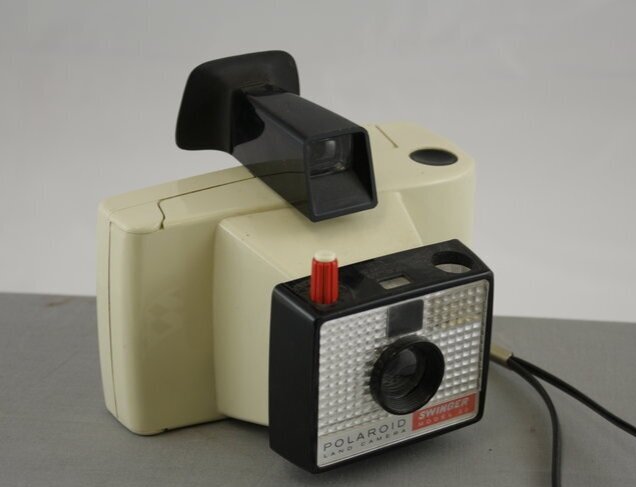Caroline C. Morris
Catalog Number: 1985.025.01
Sparklers, faded Coke signs, red-checked tablecloths; these are all treasured pieces of Americana that we pull out for the Fourth of July. This year, consider adding the Polaroid Swinger to your table decorations, and let guests snap a few candid shots at your back-yard barbecue. After all, what could be more American than a self-developing instant camera?
Fifty years ago in 1965, the Polaroid Swinger Camera changed the way people documented their lives. The white plastic box had rounded edges, a large black viewfinder with a rubber eye shield on top, and the instructions molded into the back panel if you forgot how to operate it. Among the camera’s novelties was a low-pixel screen on the back that flashed “YES” if the light exposure was right. But the best part was the slot on the side, from which the camera ejected your undeveloped film. Peel off the front and watch your photo come to life, like the advertisement promised: “From snap to finish in just 10 seconds!”
Anyone could use a Swinger, but the Polaroid Corporation worked hard to sell them to young people in particular. At a suggested retail price of $19.95, it was more affordable than most cameras, and the plastic case meant it was also lightweight. Television advertisements featured a young Ali MacGraw – who would later become a box office star in the 1970 film Love Story – in a two-piece bathing suit carrying her Swinger in the ocean, taking pictures of her friends. While Ali MacGraw walked through the surf, Barry Manilow crooned, “Meet the Swinger, the Polaroid Swinger!” With marketing like that, it’s no wonder that the Swinger went on to become one of the best-selling cameras in American history.
This article was originally published in the La Crosse Tribune on July 4, 2015.
This object can be viewed in our online collections database by clicking here.

